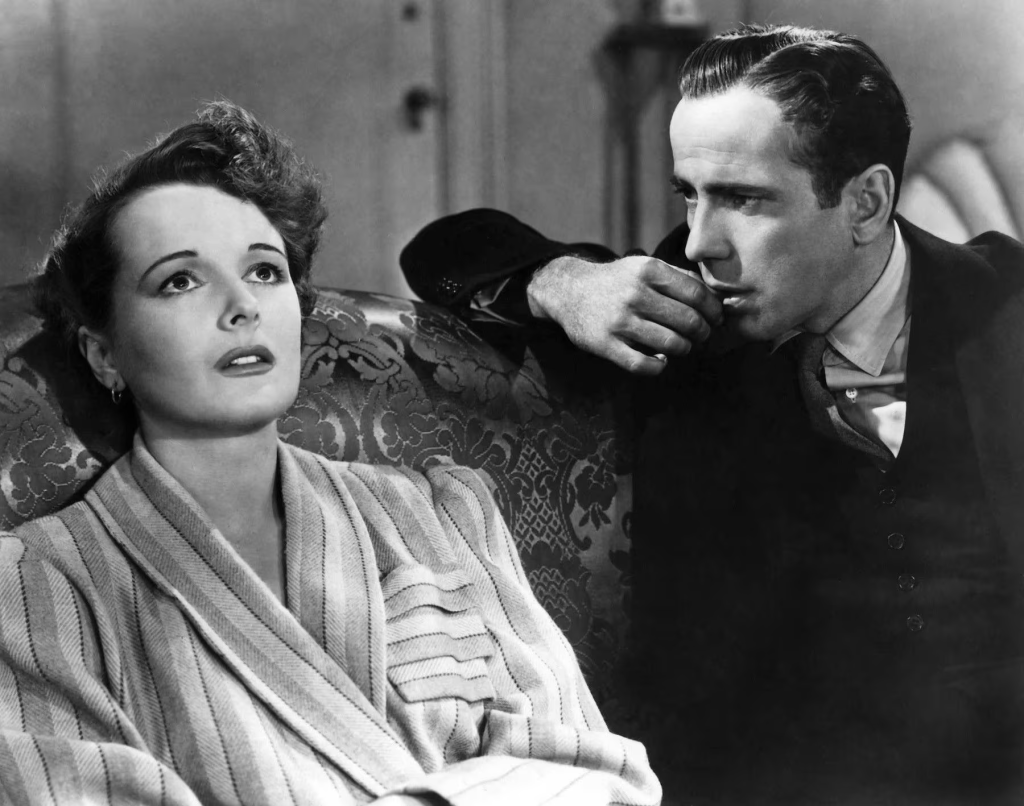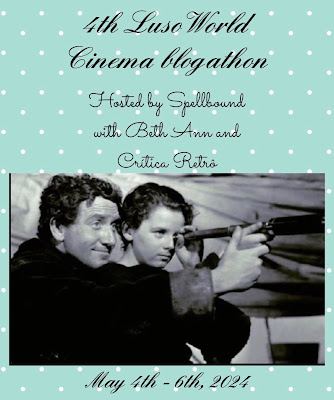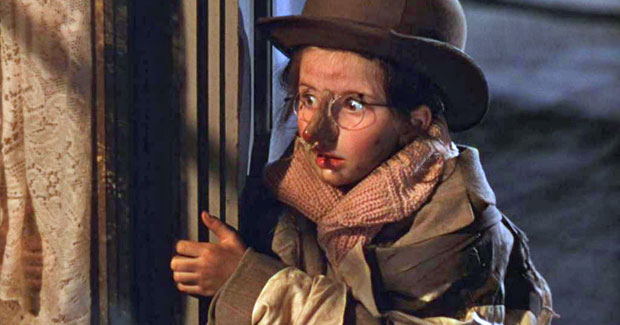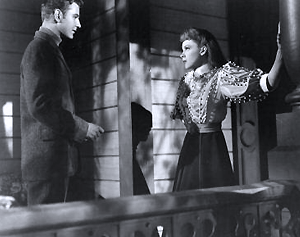The Luso World Cinema Blogathon is an annual event hosted by Spellbound with Beth Ann and Critica Retro. I’ll admit that I didn’t know anything about Luso cinema, in fact, I didn’t know what “Luso” meant. Research revealed that “Luso” is a prefix used in relation to Portugal and Portuguese culture. From reading through the list of actors/actresses of Portuguese heritage, I learned that one of my favorites, Mary Astor, fits this description.
Mary Astor was born Lucile Vasconcellos Langhanke in Quincy, Illinois on May 3, 1906. Her father was German and her mother was American. Mary got her Portuguese heritage from her mother. Mary was homeschooled by her mother until 1919 when she sent a photo of herself to a beauty contest and became a semi-finalist. When she was 15, she began taking drama lessons and appearing in local productions. Mary submitted her photos to other beauty contests, eventually catching the attention of an employee at Famous Players-Lasky. She was then signed to a six-month contract at Paramount. Mary would eventually make her screen debut in 1921 at the age of 14.
Mary’s career in silent film had its ups and downs. In 1929, she briefly found herself out of work as her voice was deemed too deep for talkies. However, she appeared in a play with her friend Florence Eldridge (wife of Fredric March) which ended up getting her back into films. She started being cast in films again and was on her way to stardom. In 1935, Mary had an extra-marital affair and was later embroiled in a bitter custody dispute with her ex-husband. In many cases, an adulteress’ career would be over, but the scandal seemed to have little effect on her career. Mary would eventually win the Best Supporting Actress Oscar in 1941 for her role in The Great Lie.
Mary Astor’s career reached its peak in the 1940s with her Oscar win and appearance in the film noir classic, The Maltese Falcon, as Brigid O’Shaugnessy. As what happened with a lot of actresses back then, as soon as Mary hit 40 she was seen as a “mother” figure and was often cast in more matronly roles such as matriarch Anna Smith in Meet Me in St. Louis and Marmee in Little Women. Some of Astor’s best roles however come during this time when she took on against-type parts, such as playing a prostitute in Act of Violence or a madam in Desert Fury. Mary made her final appearance in 1964 in the small, but important role of Jewel Mayhew in Hush, Hush Sweet Charlotte.
Mary Astor had a lot of great roles in her long career. Here are my top 5 favorite Mary Astor performances:

#1 Dodsworth (1936). In this film, Mary plays “the other woman,” a role which typically isn’t sympathetic and is usually villainous. However, in Dodsworth, Mary’s performance as Edith Cortright and relationship with Walter Huston’s Sam Dodsworth is so beautiful that she is seen as the woman that Sam deserves. In this film, Sam and his wife Fran (Ruth Chatterton)’s daughter is all grown and married. Fran cannot accept being old enough to have a grown and married daughter. Sam retires and hopes to live a life of leisure with Fran. They’re planning on starting their retirement with an extended European vacation. While on the ocean liner, Sam meets Edith and Fran meets a young Englishman (David Niven) with whom she flirts. Sam ends up spending much of his time on the boat with Edith. While in Europe, Fran wants to be part of the jet set, spending her time living the high life while pretending to be much younger. Sam just wants to see the sights. As the Dodsworths find themselves growing apart, through a chance encounter, Sam reunites with Edith.
Mary’s performance in Dodsworth is very charming and sweet. She is what the film needs to offset the vain and materialistic Fran. While she is the “other woman” so to speak, Sam is such a nice guy and Fran is so awful, that we as the audience want Sam and Edith to be together.

#2 The Palm Beach Story (1942). Mary Astor’s performance in this film is unlike any other part that I’ve seen her play. While she doesn’t seem like the obvious choice to appear in a Preston Sturges screwball comedy, Mary is right at home. In this film, she plays the oft-married Princess Maud Centimillia. At the start of the film, she’s on her way home to Palm Beach, FL with her latest conquest, Toto. She pulls up to the dock in her yacht and immediately wants to drop Toto for Tom Jeffers (Joel McCrea). Tom is in town looking for his wife, Gerry (Claudette Colbert) who has traveled to Palm Beach from New York. While on the train to Florida, Gerry meets the Princess’ brother, John D. Hackensacker III (Rudy Vallee). John is instantly smitten with Gerry and takes her back to his home to give her a place to stay.
Mary Astor’s performance as the Princess is hysterical. Even though she’s taken Toto as her lover, she wants nothing to do with him as soon as she spots Joel McCrea. Her disdain for Toto is so clear and obvious, but he’s a dope and doesn’t pick up on it. The Princess constantly has to think of errands to send Toto on so she’ll go away. She’s also very funny when Gerry introduces her husband as “Captain McGlue” in an effort to hide the fact that he’s her husband. When Tom later reveals that he is not Captain McGlue, the Princess says: “Thank heaven for some things. That name!”

#3 Red Dust (1933) In this film, Mary plays Barbara Willis, the wealthy wife of Gary (Gene Raymond) who is sent to oversee a rubber plantation in French Indochina. The manager of the rubber plantation is Dennis Carson (Clark Gable). Another visitor to the plantation is Vantine (Jean Harlow), a young prostitute on the lam. Vantine is instantly smitten with Dennis and he seems interested in her until he sees Barbara. Barbara is the polar opposite of Vantine. She is brunette, more classy and ladylike. In contrast, Vantine is a bleached blonde, a brash, and outspoken. Gary ends up coming down with malaria, which puts him out of commission and more importantly, away from Barbara. Dennis spends the week of Barbara’s visit seducing her until she finally succumbs to his advances. Meanwhile, Vantine looks on with intense jealousy.
This is a very sexy part for Mary Astor. She is given the chance to have the hot and heavy affair with the hunky Clark Gable. The entire film is sweaty and it feels sweaty. At one point, Barbara is caught in the rain and is drenched. She then shares a sexy kiss with Gable.

#4 Midnight (1939) In this film, Mary plays the wealthy Helene Flammarion, the wife of Georges Flammrion (John Barrymore). She is very openly having an affair with ladies man, Jacques Picot (Frances Lederer). At the beginning of the film, Eve Peabody (Claudette Colbert) crashes a concert attended by members of the Parisian high society. She ends up running into Marcel Renaud (Rex O’Malley) who invites her to play bridge with himself, Helene, and Jacques. Eve introduces herself as “Madame Czerny.” Georges enters the room and sees Eve. He pretends to recognize Madame Czerny.
Georges comes up with a scheme to break up his wife and Jacques. He proposes to Eve that she try and break up Jacques and Helene. If she succeeds, Georges will give her a good payoff to reward her for her efforts. He will also give her 50,000 francs and invites her to his and Helene’s home in Versailles for the weekend. Georges also puts Eve up in a suite at the Ritz and buys her a new wardrobe, worthy of her persona as Madame Czerny. Meanwhile, cab driver Tibor Czerny (Don Ameche) is looking for Eve, having fallen in love with her while her drove her around town. When he finally finds her, he is amused that she’s taken on his surname as her fake royalty name.
While Mary Astor is more of a side character in this film, she is very funny in her part as John Barrymore’s unfaithful wife. She has absolutely no discretion in her affair with Jacques. Mary excels in these parts playing a bit of a goody two shoes, but also classy and a bit rigid. She’s also great at delivering her lines with a bit of bitterness, cynicism, while also being very funny.

#5 The Maltese Falcon (1941). This is perhaps Mary Astor’s most famous role, that of femme fatale Brigid O’Shaugnessy in John Huston’s directorial debut and Humphrey Bogart’s breakout role. In this film, Brigid introduces herself to Bogart’s Sam Spade as “Miss Wonderly,” but he soon figures out that she’s lying about her identity. She comes to Sam wanting help in finding out the whereabouts of her missing sister. All Brigid can say is that she came to town (San Francisco) with Floyd Thursby. Sam puts his associate, Miles Archer, on the case. Miles is murdered while investigating Thursby’s whereabouts.
Sam sets out to investigate Archer’s death, but is soon thrust into an even larger (more interesting) mystery. He goes to Brigid, now calling herself Brigid having abandoned the “Miss Wonderly” moniker, to find out more information about Thursby. Brigid confesses that she made up the story about her sister and revealed that Thursby was her partner. She also puts forth the theory that Thursby probably killed Archer. When Sam returns to his office, he encounters Joe Cairo (Peter Lorre) who is wanting help looking for a statue of a black bird.
The black bird investigation proves to be a lot more interesting, especially when it turns out that Brigid is acquainted with Joe Cairo. Sam also learns that Cairo and Brigid are part of a gang led by Kasper Gutman (Sydney Greenstreet). Wilmer Cook (Elisha Cook Jr.) is Kasper’s gunsel and eventual fall guy. The ending of the film where Sam calls Brigid out and says she was responsible for Archer’s death. This is Mary Astor’s time to shine. In the scene, she is heartbroken that Sam Spade, with whom she thought she was in love, sends her up the river. She pleads with him to not turn her over to the police, but to no avail. He “consoles” her stating that she’ll probably be out in twenty years. As she descends in the elevator, Brigid’s face is covered by the shadows of bars on the windows.























